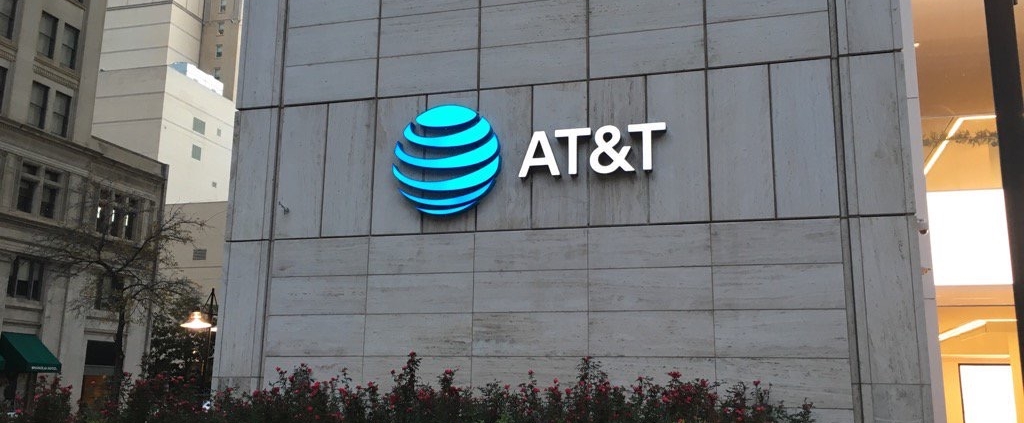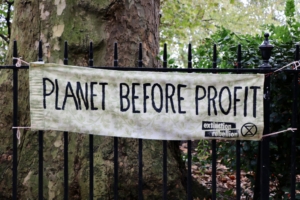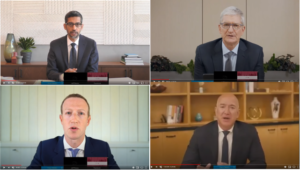Who Do You (Anti)Trust? Millennials #Adulting on Scams, and Friends in Low Places
Here’s What You Need To Know
In the nation’s capital this morning, members of the public lined up early to get a prime seat, not at the theater but at the federal courthouse, for one of the most anticipated dramas of the year: the antitrust trial over AT&T’s $85.4 billion bid to acquire Time Warner. The outcome of the trial will have large implications beyond the Beltway, with media companies and other prominent industries watching closely the arguments on both sides, and hints to its possible conclusion, in order to stay ahead of the curve in today’s regulatory environment. Here’s what you need to know about the case:
- Why The Merger Came About: Ironically, AT&T’s efforts to compete against what it sees as an advertising duopoly has gotten it labeled a potential monopoly itself. With data now widely considered the world’s most valuable resource, AT&T’s move to acquire Time Warner is an effort to capture the data of millions of viewers who watch Time Warner’s content on channels like HBO, TBS, CNN, and TNT, as well as its blockbuster movie franchises like DC Comics and Harry Potter. This move could allow the conglomerate to “reinvent itself as one giant advertising network” that could rival tech giants Facebook and Google, who currently dominate the online ad industry and have been attracting dollars from television. The merger was not expected to be controversial because regulators have approved similar vertical mergers in the past.
- How The Merger Ended Up In Court: AT&T CEO Randall Stephenson initially went on a “charm offensive” to not only ease apprehensive executives within the Time Warner empire, but also to lobby the President and help influence easy approval of the merger. But it has not worked out that way. AT&T declined the Department of Justice (DOJ) condition that it sell Time Warner’s Turner unit, and the DOJ filed suit to stop the merger. While there has been speculation that Trump’s disdain of Time Warner’s CNN is responsible for the government’s stance against the merger, the DOJ argues that it would mean less competition for consumers, despite not being head-to-head competitors, and result in potential raised costs of $436 million for consumers.
- What Other Media Companies Are Watching: Earlier this month, the chief executive of the world’s largest advertising agency, WPP’s Martin Sorrell, told CNBC that consolidation is the future of the media industry – largely due to “certain pressures, technological changes in the long-term, and shorter-term pressure” from tech companies disrupting traditional media and consumers shifting to cross- and multi-platform content consumption. To compete with tech companies like Netflix, Amazon, and others, media companies are watching to see whether ambitious vertical integration will gain regulatory approval in this case. If so, Disney’s acquisition of 21st Century Fox and Sinclair Broadcasting’s purchase of Tribune Media will likely face less scrutiny on this front, and even encourage other deals – like a possible recombination of CBS and Viacom – to move forward.
- How The Outcome May Reverberate In Other Regulated Industries: Beyond media, this trial is viewed as a bellwether because mergers are on the rise. For example, one major pending deal before the DOJ includes CVS Health’s $69 billion merger with Aetna. Furthermore, a decision in favor of the DOJ will allow tech to continue to have an upper hand on traditional media, and will also help the tech industry determine regulators’ appetites at a time when policymakers are calling for increased regulation of their activities and business practices.
- How Companies Can Anticipate And Mitigate Similar Challenges: Precedent seemed to suggest that AT&T’s merger with Time Warner would be easily approved, but instead the merger is highlighting the fact that an easy process of regulatory approval cannot be assumed. Engaging an extensive network of lobbyists and unveiling a public relations “charm offensive” are no longer enough for companies thinking about mergers and acquisitions in today’s fluid and uncertain regulatory environment. Instead, companies need to operate from a place of knowing what they don’t know, ensuring that they fully understand the regulatory landscape – key personnel and stakeholders, any opposition, the network of influence whose interest align for and against it – and use that information to build their case and make well-informed business decisions.
A ruling on the AT&T-Time Warner antitrust case is expected sometime before the June 22 merger deadline. Until then, companies can only wait, watch closely, and begin anticipating and preparing for whatever comes next.
News You Can Use
FRIENDS IN LOW PLACES
Subscribe to Receive Insights
"*" indicates required fields
In the throes of the 2016 presidential campaign, then-First Lady Michelle Obama delivered an impassioned speech at the Democratic Convention in Philadelphia that was widely seen as a “backhanded slap” at then-candidate Trump’s campaign, pronouncing that “when they go low, we go high.” How things have changed since then. Philippe Reines, a former aide to Hillary Clinton, shared his advice for Democratic presidential candidates in 2020 to beat Trump, which includes going “high when you can,” but largely using tactics that are for those “living in the real world,” imitate Trump’s penchant for boasting, gloating, and never apologizing, and shun hiring staff “who [say] they’d rather lose than stoop to [Trump’s] level.”
While some candidates in this cycle may be adapting to this cruder version of politics that is not big on social graces, and which failed to work for Reines’ candidate in 2016, an oasis made up of serious candidates in both parties – who campaign hard on policies and facts – may make for a more palatable and effective campaign in 2020. But if Democrats follow Reines’ advice to hurl more insults at Trump and his voters, the results in 2020 are unlikely to be much different than they were in 2016.
MILLENNIALS #ADULTING ON SCAMS
While older people are often warned to be vigilant of cons and scams, the Federal Trade Commission (FTC) released a report showing that younger Americans in their 20s and 30s are actually more vulnerable to falling for them. In fact, twice as many millennials lost money in reported fraud during 2017 as did people over the age of 60, although the latter often lost more money.
One prominent explanation for this surprising fact is that millennials are more comfortable sharing their personal information online, where scammers can then target online accounts and take stolen data and sell it on the dark web. So, while there may be an inclination to chalk up the FTC’s findings to the added wisdom of age or confirmation-bias against millennials, it may be correlated instead to the technologies in which younger generations are well-versed.
FACTS OUT OF THE BAG
Measures that enact plastic bag bans have become common in localities across the country as a way to become more green and minimize the environmental impact of single-use plastic bags used in retail stores and supermarkets. But what if policies that discourage plastic bag use are actually bad for the environment?
That appears to be the conclusion of a government study in the United Kingdom that was meant to inform policymakers on this issue before enacting plastic bag policies, which shows that alternatives to plastic – like paper, cotton, and low-density polyethylene – have a worse environmental impact than single-use plastic bags. Though these results did not stop UK policymakers from proposing to extend policies to tackle today’s “throwaway culture,” they suggest that ideology and intentions may be behind plastic bag policies that are ineffective and have the opposite impact desired.
REPEAL IN A ROUNDABOUT WAY
Republicans’ failure to repeal and replace Obamacare with unified control of the federal government was a cause for anger and embarrassment, although Reason managing editor Peter Suderman argues in The New York Times that Republicans may “have succeeded anyway – just not in the manner they expected.” Suderman points to concrete steps such as Congress’s repeal of the individual mandate and the Medicare cost-control board as part of last year’s tax reform law, and the executive branch’s support of association health plans and limited-duration insurance. Yet, he notes that people who support market-driven health care, as opposed to those who want to amend health policy at the federal level by reforming Obamacare in their own image, are caught in a dynamic that cedes the “real debate about how health care should be financed, regulated and provisioned.”
The most plausible way to restore the debate to its crux may be through the courts. Several states are pursuing a lawsuit challenging Obamacare’s constitutionality after the individual mandate, which the Supreme Court ruled as constitutional only because the Court deemed it to be a tax rather than a questionable regulation of commerce, was repealed as part of tax reform. As such, this lawsuit may represent perhaps the final chance for actual full repeal of the 2010 law. Even if it fails, though, the foundational pieces of the law are crumbling, and the reforms underway may provide a path to a better, post-Obamacare future of care – that is, unless Republicans in Congress work to shore up the status quo.
FOCUSED RECRUITING OR DISCRIMINATION?
Is a company’s decision to focus on college campus recruiting discriminatory? Middle-aged accountants who applied to PricewaterhouseCoopers and were rejected believe so, suing the firm and alleging that its focus on college recruiting discriminates against older applicants. This case and others are endemic of a new legal battleground focused on age discrimination over hiring, rather than firing. The Communications Workers of America recently filed a class-action lawsuit against T-Mobile U.S., Amazon.com, and Cox Communications alleging that by using Facebook recruitment ads targeted by age, the firms were in violation of “the federal Age Discrimination Employment Act (ADEA), which protects individuals who are 40 years of age or older from employment discrimination based on age.”
Case precedent requires that plaintiffs prove that age was the decisive factor in their complaints, highlighting that companies will not only have to adapt to the new legal threat from increasingly common age discrimination litigation, but also the new political and reputational challenges that may result from the fallout from such allegations. As the judge in the PwC case asked, “How can I tell who is [recruiting on campus] for invidious reasons and who isn’t?” Firms will have to tread carefully, lest the court of public opinion decide for them.



